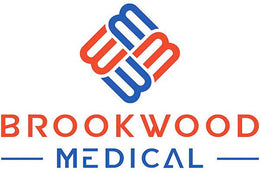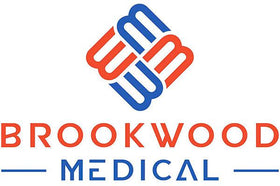The Evolution of Face Mask Design Over the Years

Frequently Asked Questions
1. How have face masks evolved over time?
2. What significant events increased the use of face masks?
3. What are some modern features of face masks?
4. How do masks serve beyond functional purposes?
5. What future trends are expected in face mask design?
Over the years, face masks have transitioned from simple fabric coverings to sophisticated designs tailored for various needs. Whether for healthcare, fashion, or public safety, the evolution of face mask design reflects society’s adaptability to new challenges. This article will explore how face masks have changed over time, highlight innovative designs, and touch on accessories like ear protectors for masks that enhance comfort and usability.
The Historical Perspective of Face Masks
Face masks have been around for centuries, originally created for protection against dust, smoke, and infectious diseases. The concept can be traced back to ancient civilizations, where people used linen or cloth to cover their mouths and noses during plagues. However, it wasn't until the 20th century that face masks gained recognition as essential health tools.
The Early 20th Century
During the Spanish flu pandemic of 1918, the use of face masks became more widespread as a means of slowing the spread of the virus. Surgical masks were introduced, typically made from cotton or gauze, and designed for healthcare workers. They were practical but not necessarily comfortable, often leading to irritation over prolonged use.
Mid-20th Century Developments
Fast forward to the mid-20th century, and masks began to incorporate more advanced materials. Synthetic fibers became popular, offering better filtration and breathability. Healthcare workers recognized the need for masks that provided higher levels of protection, leading to the introduction of masks equipped with multiple layers and specialized designs. This period marked a significant step in mask technology, preparing the groundwork for the innovations to come.
Modern Face Mask Designs
With the outbreak of the COVID-19 pandemic in 2020, face masks became essential items worldwide, propelling significant changes in their design. Manufacturers strived to create styles that were not only functional but also fashionable, leading to a massive shift in consumer expectations.
Fashion Meets Functionality
In the early days of the pandemic, many people turned to DIY solutions, crafting face masks from old t-shirts, bandanas, or whatever fabric they had on hand. As awareness of the importance of proper mask design grew, the market for stylish, reusable face masks exploded. Now, consumers could choose from a myriad of colors, patterns, and materials, allowing for personalization while ensuring safety.
Advanced Materials and Technology
Today’s face masks boast advanced materials that provide enhanced filtration and comfort. N95 and KN95 masks, designed for superior filtration efficiency, became highly sought after during the pandemic. These masks utilize specialized layers that help filter out 95% of airborne particles, significantly increasing the wearer's safety without sacrificing comfort. Many manufacturers have incorporated ear protectors for masks, providing much-needed relief for those wearing masks for extended periods.
Innovative Features in Mask Design
As the demand for comfortable and effective face masks continues, innovative features have emerged in designs. Here are a few notable advancements:
- Adjustable Straps: Many modern masks come equipped with adjustable ear straps, allowing wearers to achieve a custom fit that can minimize discomfort.
- Ear Protectors for Masks: A popular accessory, ear protectors help alleviate the pressure on the ears caused by prolonged mask wear. These simple additions can significantly improve the wearer's comfort when using masks for hours on end.
- Built-in Filters: Some designs now feature integrated filter pockets, allowing users to insert filters that enhance the mask's filtration capacity without altering its appearance.
- Breathable Materials: Fabrics like moisture-wicking polyester and soft cotton blends have become popular choices for their comfort and breathability.
The Role of Design in Public Health Awareness
Face masks have also become a canvas for political statements and public health messages. Brands and designers used masks to communicate messages about social justice, environmental causes, and health awareness. This creative expression helped normalize the use of masks and encouraged compliance with health recommendations.
The Importance of Stylish Designs
The increase in stylish mask options proves that functionality and aesthetics can coexist. Masks with unique designs have made wearing them more acceptable, particularly among younger demographics who might have initially resisted mask-wearing. As a result, the evolution of face mask design has contributed to improved public compliance with health directives.
Future Trends in Face Mask Design
Looking ahead, face mask design continues to evolve, influenced by ongoing public health needs and consumer preferences. Here are some emerging trends worth noting:
- Smart Masks: Technology integration into masks is on the horizon, with possibilities including air quality sensors and connected features that inform wearers about environmental conditions.
- Sustainability Focus: With growing environmental awareness, many brands are seeking eco-friendly materials to produce reusable masks, reducing waste associated with single-use options.
- Custom Fit Solutions: The future may bring even more customizable solutions, including masks tailored to individual facial contours for optimal protection and comfort.
Adapting to New Norms
The ongoing evolution of face masks represents a broader adaptability within society. As we have learned to navigate through health crises, masks have become an integral part of our daily lives, transforming from mere medical equipment into fashion essentials and personal statements. Their design evolution reflects not only the practical needs of wearers but also the cultural shifts and personal expressions of individuality.
The Impact of Community and Collaboration
One of the most remarkable facets of mask design evolution during recent years has been the collaboration among communities. Various groups, including fashion designers, local artisans, and even nonprofits, have jumped into the fray, utilizing their skills to produce masks for healthcare workers and communities in need. This collaborative spirit not only enhanced the availability of masks but also allowed for unique designs that celebrate diverse cultures and artistic expressions.
Final Thoughts on Face Masks
The journey of face mask design reflects humanity's resilience and creativity. From rudimentary cloth coverings to advanced systems meant to fortify protection levels, each step in this evolution has been influenced by necessity, innovation, and style. Just as we have adapted our lives to realistic measures to combat health crises, the masks we wear symbolize our collective commitment to safety and community well-being. As we embrace the future, we can expect to see continued evolution, ensuring that masks remain a smart and necessary accessory for health and fashion simultaneously.






